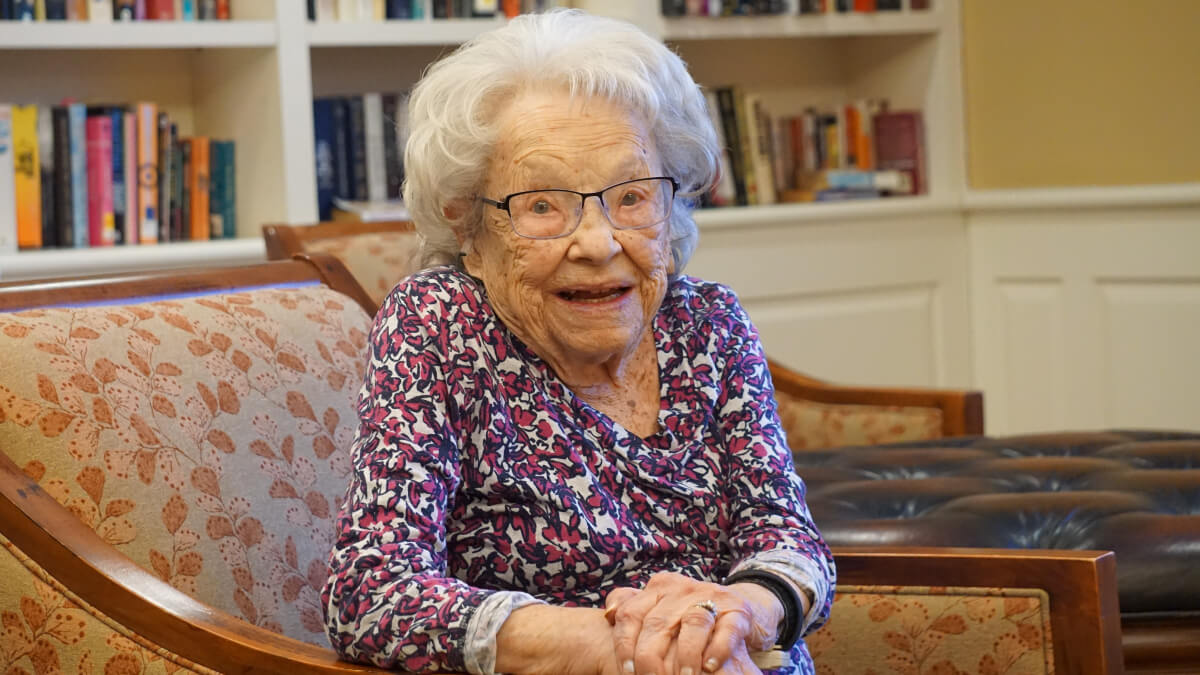Who We Are – Shattered Her Share of Glass Ceilings
Shattering glass ceilings in science

When people talk about the “Greatest Generation,” they usually focus on the men who were born in the 1920s who lived through the Great Depression and fought in World War II – hopefully to return home to start the “Baby Boomer” era. But alongside them – and in some cases taking their places at essential jobs – were women. Among those was Virginia Whitcomb.
I had an interesting life,” says the resident of Benchmark Senior Living at Hamden, understating her role.
Born in 1922, she grew up a couple of blocks away from Central Park in New York City. Although there was an art museum nearby, she remembered that she would rather put on her skates (tightening them with the skate key she wore around her neck) and glide across the park to the Museum of Natural History.
“Central Park was my playground,” she said, adding that she preferred two-wheel roller skates over the conventional four-wheel versions of the 1930s. They were more flexible, she explained, and that, apparently, is the way that she rode.
A female in a man’s world
After starting high school in the city, her family moved to New Rochelle where she graduated and went to Duke University. Her daughter, Patience Benassi, pointed out that Duke wasn’t her choice. Her parents picked it (as they often did in those days), put her on the train, and off she went. Once there, Virginia excelled despite being one of just a few females majoring in science.
Overall, she doesn’t recall any major issues at Duke, although her daughter pointed out that there was one astronomy class that her mother wanted to take. The teacher refused to teach females, so while she and some other women had the pre-requisites, she was not allowed in.
She was a chemistry major, but unlike most others, she focused on physics, not biology. That brought her to the atomic physics class where she met her future husband, Wayne.
While at Duke, Virginia did some basic research for a professor. Today, she vaguely remembers the details, but later found out that the research was part of the Manhattan Project, which resulted in the atomic bomb.
“I remember that I wasn’t to tell anybody what I was doing,” she says, adding that she was “bewildered” as to the reason why. It wasn’t until later that she became aware of the significance of what she worked on.
A care-giving chemist
After graduation in 1943, Virginia worked for the Burroughs Welcome pharmaceutical company. Her daughter notes that Virginia was told that she was only getting the job because most men were at war: “When the war ended, the men would get their jobs back.”
For Virginia, it was a great job because she enjoyed chemistry. “We were analyzing drugs for their chemical make-up to determine the best way to manufacture them for accuracy in strength,” she explains.
Virginia and Wayne married on a weekend leave from the Army in 1944. She raised four children, taught for a couple of years, earned a master’s degree, and worked as a chemist in a clinical lab at Yale New Haven Hospital until she retired. After more than 30 years of marriage, her husband, a radiologist, died at 56 in 1976.
With her husband, family, and friends, Virginia visited all seven continents. An avid bridge player, she participated in other sports and supported local theatre companies and the New Haven Symphony. She also loved kayaking and was on the water as recently as two years ago.
Along the way, she took care of her father and mother-in-law and maintained the family home until she was 95.
Although the COVID-19 pandemic has temporarily changed life in the community, Virginia stressed that the Hamden staff have been great. “The people who work here are extremely kind and patient with this old lady,” she said. “They’re very good to me.”
Benchmark Senior Living at Hamden


